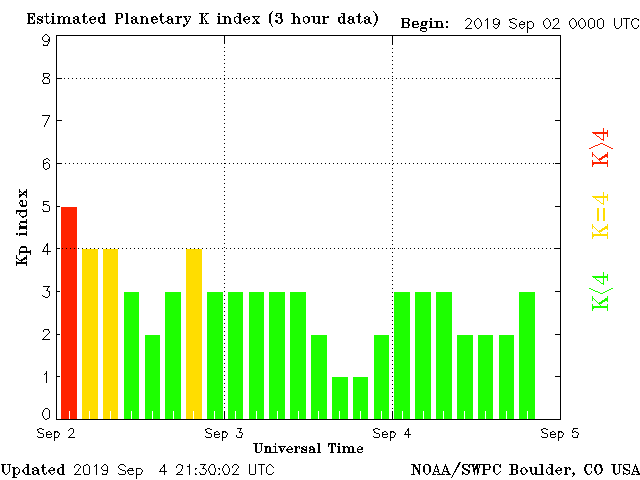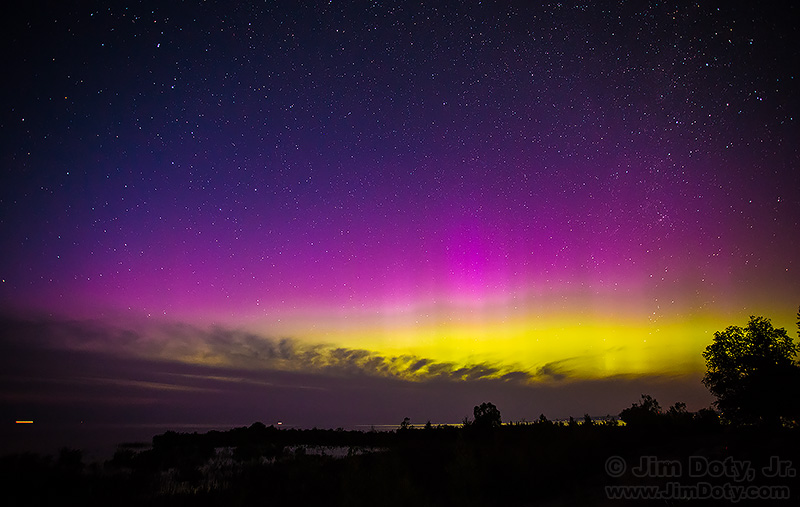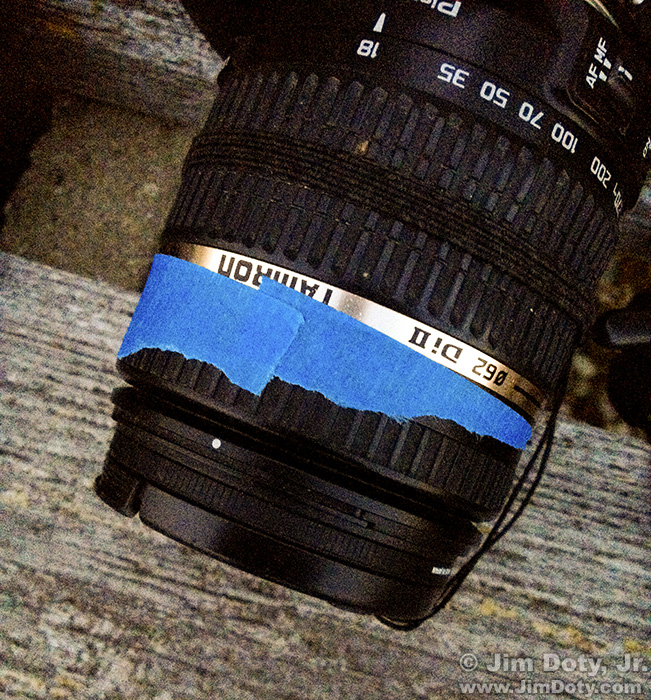As we head into fall the Northern Lights activity will pick up. The best time to view Northern Lights is from September to late March (although things may start up in August and extend into April). This article will tell you how to capture the Northern Lights with your camera. The Northern Lights come and go in an erratic fashion so this article will also show you how to know which nights are likely to be the best to go out and look.
Dark Sky Locations
To see and photograph the Northern Lights you need a clear night sky far from big city lights. The image above was created on a great night for Northern Lights in far Northern Michigan. I was leading a photography workshop so it was a great treat for all the photographers! I specifically picked this location on Lake Michigan, several miles northwest of Charlevoix Michigan so we would have the lake, some trees for framing the image and a good view in the expected direction of the Northern Lights.
A dark sky map/finder is here. You can zoom in and out and move around on the map to find the darkest location near you. You can also find officially designated IDA (dark sky association) sites here.
Northern Lights Photo Techniques
The key to photographing the Northern Lights is a wide angle lens focused exactly at infinity. This article will give you several ways to find infinity on your lens.
Since most zoom lenses will focus past infinity, one way to find infinity on your lens is to focus on a far distant object during the daytime and checking where that is on your focusing scale. If you don’t have a focusing scale, tape the focusing ring down so it doesn’t move. I had everyone at the workshop focus on the distant horizon line between the lake and the sky, take some pictures and magnify them to make sure the focus was accurate, turn off autofocus, and wait for the sky to darken and the stars to come out.
This lens has no distance scale. So the photographer autofocused on the distant horizon while it was still daylight, took a picture, checked it on the LCD to insure critical sharpness, turned off autofocus, and taped the focus ring in place with painter’s tape so it wouldn’t move. Don’t use duct tape! It leaves a sticky residue. Gaffers tape or painter’s tape is better. When it got dark this photographer was all set for night photography.
Set your lens aperture to f/4.
As a general rule set your shutter speed to 15 seconds for a wide angle lens and 30 seconds for an ultra wide angle lens (to prevent the stars from trailing too much). If the stars are trailing too much with the focal length of the lens you are using, go to a shorter shutter speed.
For a more precise choice of a shutter speed, you can use the “Rule of 500” to prevent stars from trailing. Divide 500 by the focal length of your lens to determine the maximum shutter speed in seconds to get an image without objectionable star trailing. If you are using a 20mm lens, divide 500 by 20 to get 25 seconds, the longest shutter speed you can use to avoid excessive star trailing.
Start with an ISO of 1600 or 3200. The Northern Lights vary in intensity so you will need to experiment a bit. If the image is too bright cut back to a lower ISO setting. If the image is too dark try a higher ISO setting.
CChoosing the Most Likely Nights for Northern Lights
There are several sites that predict the likeliness of the Northern Lights appearing in the night sky. I recommend you go to NOAA’s Space Weather Prediction Center (SWPC). Look for the “Estimated Planetary K-Index” chart and compare it to the map below. The chart will look something like this:

“Estimated Planetary K-Index” Sample chart for September 2-4, 2019. For the current chart go to the SWPC.
Red is best (higher Kp-index numbers).
The chart is based on estimates, not guarantees that you will see the Northern Lights. But comparing the current estimated K-index from the SWPC with the “Kp Index Map” below will increase your odds. You can also sign up for email alerts for current updates so you don’t have to keep going to the SWPC site.
Each bar represents a 3 hour time block beginning with midnight to 3 am. This chart is in UTC (Coordinated Universal Time) so you will need to convert this chart for your time zone. Midnight to 3 am UTC on September 2 is 8 pm to 11 pm on September 1, EDT in the U.S.
UTC to United States Time Conversion
Atlantic Daylight Time| subtract 3 hours from UTC
Atlantic Standard Time| subtract 4 hours from UTC
Eastern Daylight Time| subtract 4 hours from UTC
Eastern Standard Time| subtract 5 hours from UTC
Central Daylight Time| subtract 5 hours from UTC
Central Standard Time| subtract 6 hours from UTC
Mountain Daylight Time| subtract 6 hours from UTC
Mountain Standard Time| subtract 7 hours from UTC
Pacific Daylight Time| subtract 7 hours from UTC
Pacific Standard Time| subtract 8 hours from UTC
Alaska Daylight Time| subtract 8 hours from UTC
Alaska Standard Time| subtract 9 hours from UTC
Hawaii-Aleutian Standard Time| subtract 10 hours from UTC
More time conversion information for the U.S. and the rest of the world is here.
The higher the Kp index (also called the K index in some reports) the farther south from the North Magnetic Pole the Northern Lights are likely to be visible. The following map will tell you how far south.
Kp Index Map
This map shows you how far south you are likely to see the Northern Lights for a given Kp index. If the Kp index is 5, it is likely all the states and provinces above the green line will be able to see the Northern Lights. That would include most of Canada, Michigan’s Upper Peninsula, far northern Wisconsin, the northern half of Minnesota, half of North Dakota, the northeast corner of Montana, and most of Alaska. If the Kp index is 9, all of Canada and most of the northern half of the United States (everything above the red line) has a good chance of seeing the Northern Lights. It is rare for states below the red line to see the Northern Lights.
Northern Lights Photo Data: Canon 5D Mark III. Canon EF 17-40mm f/4L lens at 17mm. 30 sec, f/4, ISO 3200.
Originally posted September 2, 2015. Revised and re-posted December 10, 2020.
Article Links
How To Focus Your Lens at Infinity for Night Photography
How To Get Critical Focus in “Live View” Mode with a Magnified Image
The Best Night, Astronomy, and Astrophotography Books
Site Links
Space Weather Prediction Center (SWPC)
How to Translate UTC to Your Time
Find a Dark Sky Place – International Dark Sky Association (IDA) sites



